
PART I: ANTECEDENTS, 1895-1898
1. NEW GEOGRAPHIC HORIZONS
Nationalist sentiments, expansionist strategies, and a war involving peoples of different cultures, climates, and locations prompted a sudden popular interest in geographical information and general knowledge about these peoples and places that had not existed before, especially in the United States. Maps, both for the specialist and for the general public, newspapers, and popular publications endeavored to meet this new demand from the public. Visualizing the vast geographic context of the war, and the minute details of the sea and land battles and islands under dispute, helped to cement support for the various war efforts and to stimulate nationalist and imperialist perceptions of old and new "possessions."
Exhibition Checklist
2. CUBAN CAMPAIGNS
The Spanish-American War, officially known since 1945 in Cuba as the Spanish-Cuban-American War (a name that encompasses war activity in Cuba from 1895 through 1898), had major roots in several armed efforts by Cuban separatists to achieve independence from Spain, especially the Ten Years' War (1868–1878), Guerra Chiquita (Little War, 1879–1880), and the Second War for Independence (1895–1898). The odds against the separatist struggles were formidable. Spanish forces had military and naval superiority. The Cuban elite and exiled groups in the United States were divided as to the strategies to follow. Among the separatists, tensions existed between the civil and military leaderships, and racial prejudices undermined their unity and confidence. Opportunities for insurrection, however, continued to be created by the lack of timely reforms and persistent problems in the Cuban economy. Also, an active propaganda campaign and organization in the United States, aiming at gaining international sympathy for and recognition of separatist belligerence, and the promotion of Cuban heroic figures engaged in guerrilla warfare, caused serious problems for Spanish dominion in Cuba and influenced U.S. public opinion.
Exhibition Checklist
3. PRO-CUBAN APPEALS IN THE UNITED STATES
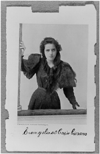 The
Cuban cause for independence received prominent coverage in the United States
prior to 1898. Disquieting Cuban news, supplied by the Cuban Delegation in the
New York office of its legal representative, Horatio Rubens, and reported in
sensationalist press campaigns, was soon recast in illustrated books, sheet
music, drawings, and other popular formats. The popularity of such news attests
to its profound impact on a U.S. public increasingly inclined to support a "war
for humanity." Spanish "atrocities" in Cuba were personified
in General Valeriano Weyler, and connected with previous anti-Spanish stances.
Spain was perceived as a declining power responsible for the deaths of innocent
civilians forcibly removed from their country dwellings. Women were seen as
the subjects of Spanish abuse and praised as heroines. "Cuba Libre"
became a household phrase, and reporters portrayed themselves as daring missionaries
against Spanish oppression and censorship.
The
Cuban cause for independence received prominent coverage in the United States
prior to 1898. Disquieting Cuban news, supplied by the Cuban Delegation in the
New York office of its legal representative, Horatio Rubens, and reported in
sensationalist press campaigns, was soon recast in illustrated books, sheet
music, drawings, and other popular formats. The popularity of such news attests
to its profound impact on a U.S. public increasingly inclined to support a "war
for humanity." Spanish "atrocities" in Cuba were personified
in General Valeriano Weyler, and connected with previous anti-Spanish stances.
Spain was perceived as a declining power responsible for the deaths of innocent
civilians forcibly removed from their country dwellings. Women were seen as
the subjects of Spanish abuse and praised as heroines. "Cuba Libre"
became a household phrase, and reporters portrayed themselves as daring missionaries
against Spanish oppression and censorship.
Exhibition Checklist
4. PUERTO RICAN DISSENT
Efforts to transform the colonial status of Puerto Rico were undertaken in
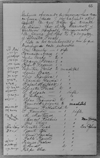 the
face of conditions different from those in Cuba. Slavery in Puerto Rico was
abolished earlier (1873) than in Cuba (1886). Spanish repression tactics, supported
by loyalists (incondicionales), were prompt in uprooting and limiting
separatist and reformist movements in 1868 and 1887. Some of the creole elite
opted for a gradualist, peaceful route to autonomy. The most visible leaders
of the Puerto Rican separatist dissent remained in exile, and attempts to spark
an insurrection in 1896 failed despite discontent and grievances on the island.
However, through political organization and an alliance with the Cuban cause,
fundraising, and propaganda in the United States and France, the Puerto Rican
separatist movement reinforced the impact of the campaign for Cuban independence
as a strategic first step toward Puerto Rican separation from Spain.
the
face of conditions different from those in Cuba. Slavery in Puerto Rico was
abolished earlier (1873) than in Cuba (1886). Spanish repression tactics, supported
by loyalists (incondicionales), were prompt in uprooting and limiting
separatist and reformist movements in 1868 and 1887. Some of the creole elite
opted for a gradualist, peaceful route to autonomy. The most visible leaders
of the Puerto Rican separatist dissent remained in exile, and attempts to spark
an insurrection in 1896 failed despite discontent and grievances on the island.
However, through political organization and an alliance with the Cuban cause,
fundraising, and propaganda in the United States and France, the Puerto Rican
separatist movement reinforced the impact of the campaign for Cuban independence
as a strategic first step toward Puerto Rican separation from Spain.
5. SPANISH AND LOYALIST STANCES IN CUBA
Faced with a serious insurrection in the crown jewel of their beleaguered colonial empire, Spanish leaders Mateo Sagasta and Antonio Cánovas promised to fight to the last man and the last penny to keep Cuba española. This oath in defense of territorial integrity was backed by an increase in Spanish military forces in Cuba from 20,000 to 200,000 men, and by the doubling of Spain's national debt, from 1895 to 1897. A massive recruitment campaign was initially buttressed by an outburst of patriotism stimulated by these official policies, other popular appeals in the press, and patriotic songs praising the army and its Cuba-bound leaders. In January 1896, Captain General Arsenio Martínez Campos, unable to contain the insurrection in the east of the island, resigned and was replaced by the hard-liner Valeriano Weyler, who opposed a political solution to the Cuban problem. Despite its unpopularity abroad and occasional but increasing criticism in Spain, Weyler's counterinsurgency military strategy was officially defended as the only method to uproot and defeat the rebels.
6. STRUGGLES IN THE PHILIPPINES
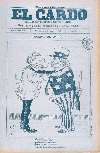 The centuries-old Spanish
colonial dominion over the Philippines was rapidly eroding by the late 1800s
under the stress of economic, social, and cultural transformations. A small
but growing group of Filipinos, schooled in institutions of basic and higher
education in the Philippines and Spain, demanded colonial reform, improvement
in education, and economic development.
The centuries-old Spanish
colonial dominion over the Philippines was rapidly eroding by the late 1800s
under the stress of economic, social, and cultural transformations. A small
but growing group of Filipinos, schooled in institutions of basic and higher
education in the Philippines and Spain, demanded colonial reform, improvement
in education, and economic development.
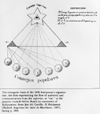 The
Spanish clergy and police were held responsible for colonial abuses and undue
influence in local politics. Filipino priests and local elites were dissatisfied
and spread their discontent among the share-cropping peasantry. In 1896, an
uprising against Spain was launched by a secret society, the Society of the
Sons of the Country, or Katipunan, as it was generally known. Although much
of its leadership came from the ranks of the indigenous elite, the Katipunan
used Tagalog figures of speech, metaphors, and symbols that had particular appeal
to the masses.
The
Spanish clergy and police were held responsible for colonial abuses and undue
influence in local politics. Filipino priests and local elites were dissatisfied
and spread their discontent among the share-cropping peasantry. In 1896, an
uprising against Spain was launched by a secret society, the Society of the
Sons of the Country, or Katipunan, as it was generally known. Although much
of its leadership came from the ranks of the indigenous elite, the Katipunan
used Tagalog figures of speech, metaphors, and symbols that had particular appeal
to the masses.
7. THE MYSTERY AND MYTH OF
THE MAINE
On the night of February 15, 1898, the second-class battleship U.S.S. Maine,
sent to Cuba on an official visit at a tense moment in the relations between
the United States and Spain, sank in Havana's harbor after a sudden and fierce
explosion of its forward magazines.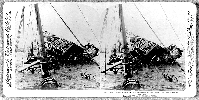 The destruction of the Maine
was a most influential incident in precipitating the war. In the United States,
the press blamed Spain for the explosion, even though spontaneous combustion
in coal storage or other similar accidents on ships were not entirely uncommon
at the time. In March 1898, two independent commissions which investigated on-site
evidence of the disaster came to opposite conclusions. The U.S. commission reported
that the explosion was external (probably caused by an explosive device), while
the Spanish commission concluded that it was internal (probably caused by an
accident). The real cause of the explosion remains a mystery, but the dominant
view among scholars today is that it was an accident. However, the vengeful
ways in which the Maine incident was portrayed, used, felt, and remembered
had an unprecedented impact in rallying patriotic responses by the public in
the United States.
The destruction of the Maine
was a most influential incident in precipitating the war. In the United States,
the press blamed Spain for the explosion, even though spontaneous combustion
in coal storage or other similar accidents on ships were not entirely uncommon
at the time. In March 1898, two independent commissions which investigated on-site
evidence of the disaster came to opposite conclusions. The U.S. commission reported
that the explosion was external (probably caused by an explosive device), while
the Spanish commission concluded that it was internal (probably caused by an
accident). The real cause of the explosion remains a mystery, but the dominant
view among scholars today is that it was an accident. However, the vengeful
ways in which the Maine incident was portrayed, used, felt, and remembered
had an unprecedented impact in rallying patriotic responses by the public in
the United States.
Stereoscopic
views allowed users to experience the three-dimensional effect produced
when the twin photographs of the stereoscopic views are visually superimposed
by the viewer's lenses. This process was invented by Oliver Wendell Holmes,
Sr., in 1850 and quickly achieved success as a form of home entertainment in
the United States. Millions of stereoscopic views were produced from the 1860s
up to 1920
Introduction | Chronology | Part I: Antecedents, 1895-1898 | Part II: Public Appeals, 1898 | Part III: Popular Participation, 1898-1899 | Part IV: Public Memories | Part V: Historical Perspectives | Audiovisual Components | Exhibition Checklist | Acknowledgments | Suggested Reading /About the Library Shop | Related Exhibits/Spanish American War Websites of Interest | Exhibition home page | NYPL Exhibitions